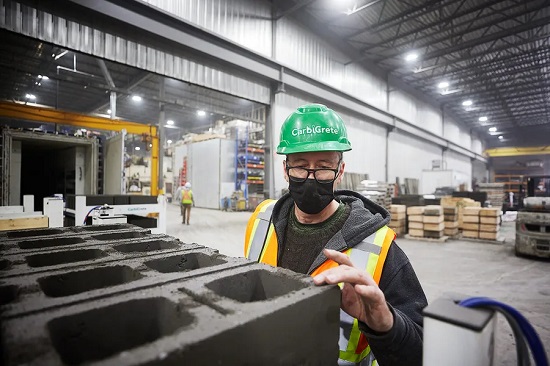 Monday, May 6, 2024
Monday, May 6, 2024  Monday, May 6, 2024
Monday, May 6, 2024 
Concrete is the single most abundant human-made material on Earth. It’s most likely beneath you right now.
Some 70 per cent of the world’s population lives in a building made with concrete. Every year – and year after year – the world produces enough concrete to pave over the Great Lakes.
But concrete is also catastrophic for the environment.
According to data from the United Nations Environment Programme, the production of concrete is the source of 8 per cent of humanity’s carbon dioxide emissions. If the global concrete industry were a country, it would be the third-largest carbon dioxide emitter, surpassed only by China and the United States.
But what if, rather than releasing carbon dioxide into the atmosphere, concrete absorbed it instead?
One Canadian technology company has produced an alternative concrete that does exactly that.
To make this special blend, “you get rid of the cement,” says Chris Stern, chief executive officer of Montreal-based Carbicrete.
Most of concrete’s carbon dioxide emissions come from manufacturing its binding agent cement. This process involves heating limestone to 1,400 C, generally using a fossil-fuel source. The heat causes the limestone to break down and release another dose of carbon dioxide.
The product Carbicrete, on the other hand, uses steel slag, a waste material from the steel-making process, to replace cement as a binding ingredient. The slag is injected with carbon dioxide captured from industrial plants. The curing process converts the carbon dioxide into a mineral; not a trace of it remains.
A typical concrete block includes two kilograms of cement, Mr. Stern explains. By eliminating cement, Carbicrete reduces two kilograms of emissions. Add the kilogram of carbon dioxide injected during curing – and a single block flips the carbon footprint from a release of two kilograms to an absorption of one kilogram.
Keep reading in The Globe and Mail